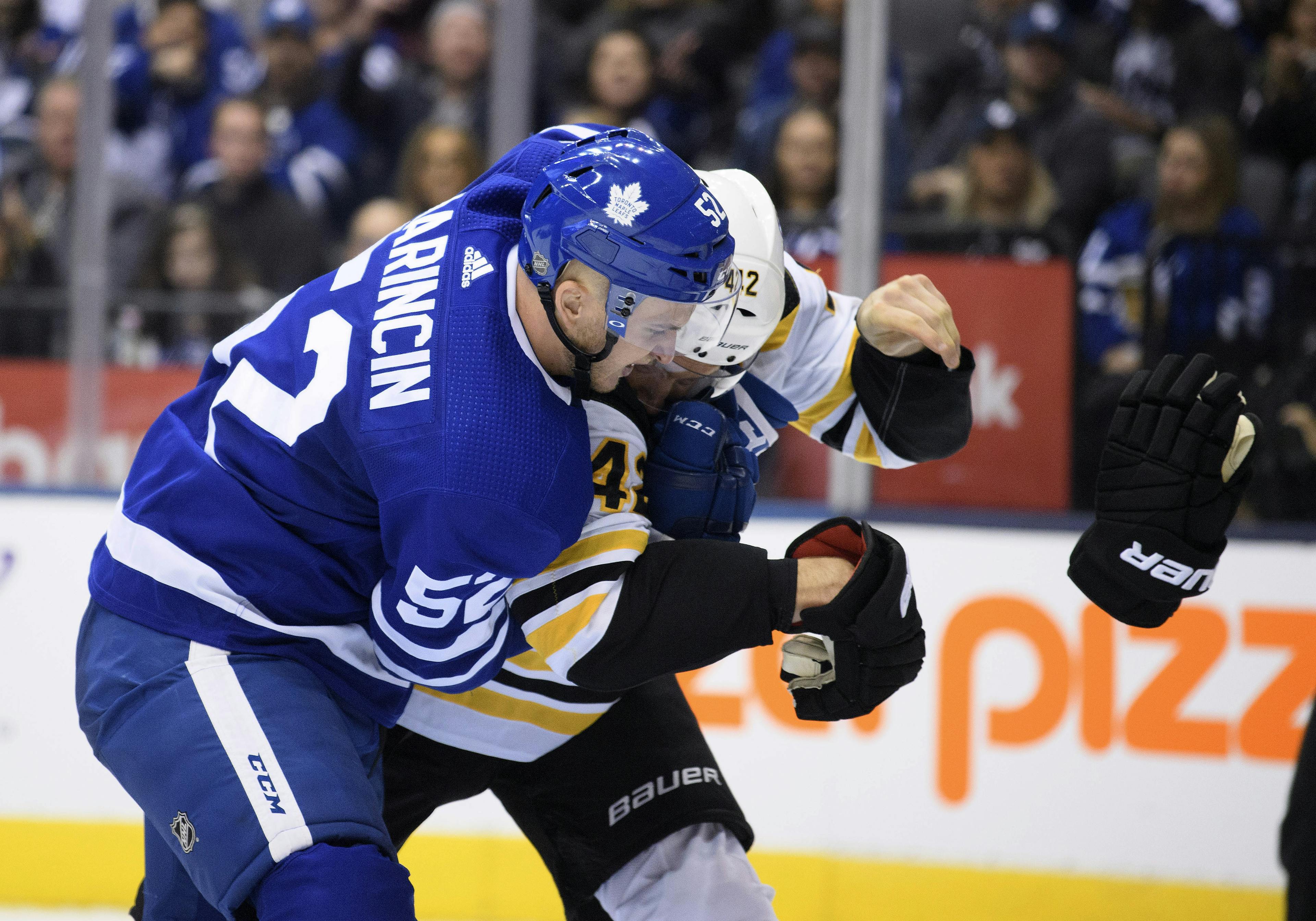Getting a Defender on Short Term Loan

By Ryan Hobart
4 years agoThere’s a mechanism in professional soccer whereby a team can loan a player to another team, either to send a young player to a lower league to gain development experience, or to address a position of weakness temporarily, or to cover for an injury. The AHL also has this function. Since the Leafs’ defense is in a state of disarray with the injuries to Morgan Rielly, Jake Muzzin, and Cody Ceci, I wanted to explore a similar mechanism in the NHL.
It’s not actually possible to “loan” a player over as in those other leagues. What they can do is trade for a player. Even though the trade deadline has passed, trades can be completed. The caveat is that that player can’t play for you in the playoffs. Since all three of the injured players expect to be healthy come playoff time, getting 1 or 2 players in to fill the gap in the short term seems like an interesting avenue to explore.
Who could we trade for?
The target player would have to meet three key characteristics.
#1 — Short Term
While not absolutely critical, it would make things a lot easier to plan for if the acquired player isn’t in the future plans beyond this season. That way there won’t be any awkwardness when the player returns next year, having not been able to be a part of whatever playoff run the Leafs may make this season. It also will avoid shaking up the long-term outlook of the defense just to address a short term problem of injury. As such, this post will only look at players whose contracts are going to expire at the end of this year.
#2 — Availability
The defender we go after has to be one that the owning team would be willing to trade away. Obviously, this will only include teams that are all-but-mathematically eliminated from playoff contention. Given that the trade deadline just finished, and most of these teams probably exhausted their options to move expiring contracts for future assets wherever possible. As such, the list of players who other teams might be willing to give up on may be quite short.
#3 — Quality
The player we acquire has to be worthwhile for us, meaning that they have to be someone we’d consider to be better than any number of the 7 defenders currently on the roster. Once again, this significantly shortens the list.
The List
Here’s the list of players that meet the above criteria, in this author’s opinion (see the bottom of the article for an explanation on the statistics used):
| Player | Team | GP | TOI | CF% | GF% | xGF% | SCF% | PDO | Off. Zone Start % |
| Michael Del Zotto | ANA | 41 | 631.37 | 46.9 | 51.61 | 46.22 | 48.48 | 1.022 | 55.95 |
| Matt Irwin | ANA, NSH | 28 | 327.43 | 51.43 | 33.33 | 46.68 | 47.25 | 0.945 | 56.18 |
| Ron Hainsey | OTT | 57 | 937.28 | 46.43 | 52.17 | 46.81 | 46.87 | 1.019 | 54.73 |
| Calle Rosen | COL | 8 | 104.12 | 49.05 | 62.5 | 47.29 | 50 | 1.035 | 47.83 |
| Tim Heed | S.J | 31 | 343.03 | 53.78 | 39.13 | 52.92 | 55.12 | 0.947 | 60.49 |
| Martin Marincin | TOR | 21 | 268.72 | 53.17 | 43.48 | 53.62 | 54.22 | 0.965 | 40.35 |
| Joakim Ryan | L.A | 34 | 580.82 | 53.05 | 36.36 | 55.59 | 52.52 | 0.955 | 54.3 |
| Ben Hutton | L.A. | 58 | 932.35 | 56.47 | 48.68 | 55.64 | 54.83 | 0.977 | 46.12 |
The table ranks the players in reverse order of their xGF%, which is usually the preferred publicly available metric for quality of performance. Martin Marincin and Calle Rosen are also on the list as the current 6th and 7th defenders for Toronto so we can see how the potential acquisitions might be an upgrade or not.
It appears quite quickly that based on these numbers, the only players that would almost certainly be an upgrade on Martin Marincin are Ben Hutton and Joakim Ryan, both of the LA Kings. Tim Heed and Ron Hainsey are also strong contenders to be more impactful than Calle Rosén, since his numbers are based on such a small sample of games that they’re not reliable. Del Zotto and Irwin are also included because it’s possible that Anaheim could be convinced to give up one of them for nothing, but they’d really be no more than a warm body even on this dilapidated Leafs defense.
Final Thoughts
The options here are very limited, so it shouldn’t come as a surprise that the probability of this happening is extremely low. This article was only meant as a fun exercise to make this ability known to the Leafs, in case some standout candidates revealed themselves.
Other than Hutton and Ryan, there weren’t any eye-catching names that would be impactful enough to be worth sacrificing a late round draft pick.
That said, it makes sense to cautiously advocate for a move like this, as the Leafs teeter on the edge of falling out of the playoffs for the first time since the 2015-16 season.
Let me know in the comments if there’s any names you feel were left out — they may be worth adding to The List™!
A Quick Primer on the Statistics Used
Firstly, all statistics we’re talking about are unadjusted 5-on-5 numbers and are taken from www.naturalstattrick.com.
“Expected Goals Percentage”. This is a measure of how many shot attempts your team is taking while you’re on ice, versus how many your team is allowing while you’re on ice, with an added factor of how close to the net each shot attempt was.
Other measures in use in that table are CF%, which stands for “Corsi For Percentage”. This is the same as xGF%, except without the added factor of shot location.
There’s also GF%, standing for “Goals For Percentage”. This measures how many goals were scored while you were on ice, versus how many goals were allowed while you were on ice. It’s a lot like +/-, except it’s expressed as a ratio instead of a count. The difference between the two, and why I prefer GF% to +/-, could be its own mini-essay, so I’ll leave it out of this post.
SCF% stands for “Scoring Chances For Percentage”. Similar to all the above measures, it takes the scoring chances, which are shot attempts taken in the “home plate” area in front of the net, and measures that for/against ratio.
PDO is essentially a measure of luck. It adds together your on-ice shooting percentage and your on-ice save percentage. On average, this number should always add up to 1. When it’s significantly higher or lower than 1, that means you’re getting more luck or less luck, respectively.
Lastly, we have Offensive Zone Start Percentage. This is a measure of how your coach is using you. If you start a high percentage (>60%) of your shifts in the offensive zone, your coach is generally “sheltering” you, or giving you the best chance to produce offensively with minimal effort defensively. If you’re at either extreme of this stat, high or low, it’s going to have an impact on all of the previously mentioned ratios.
Recent articles from Ryan Hobart





